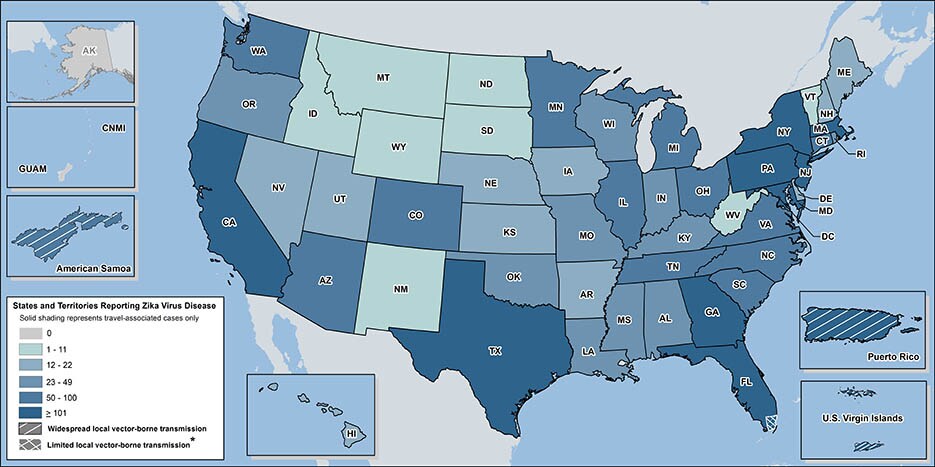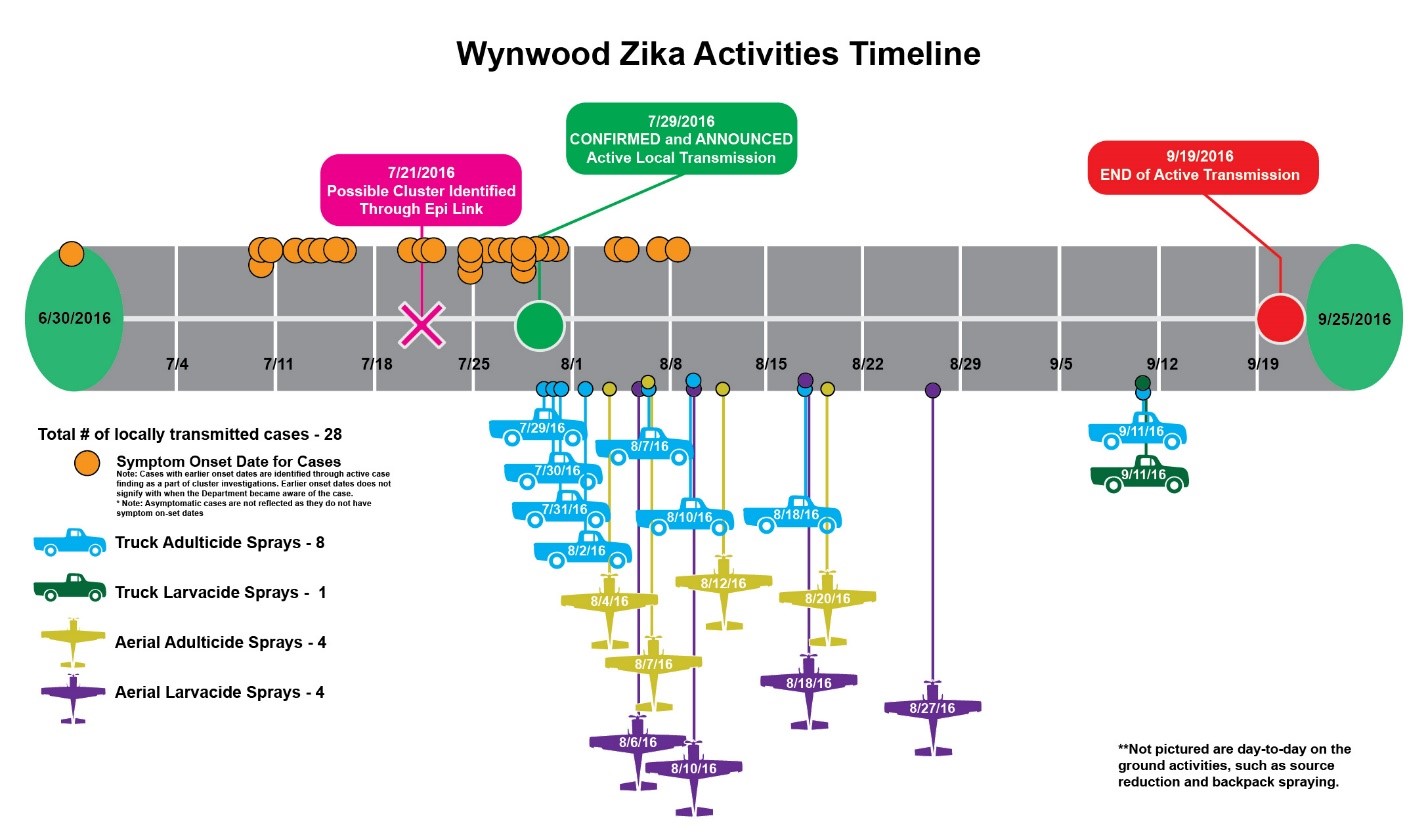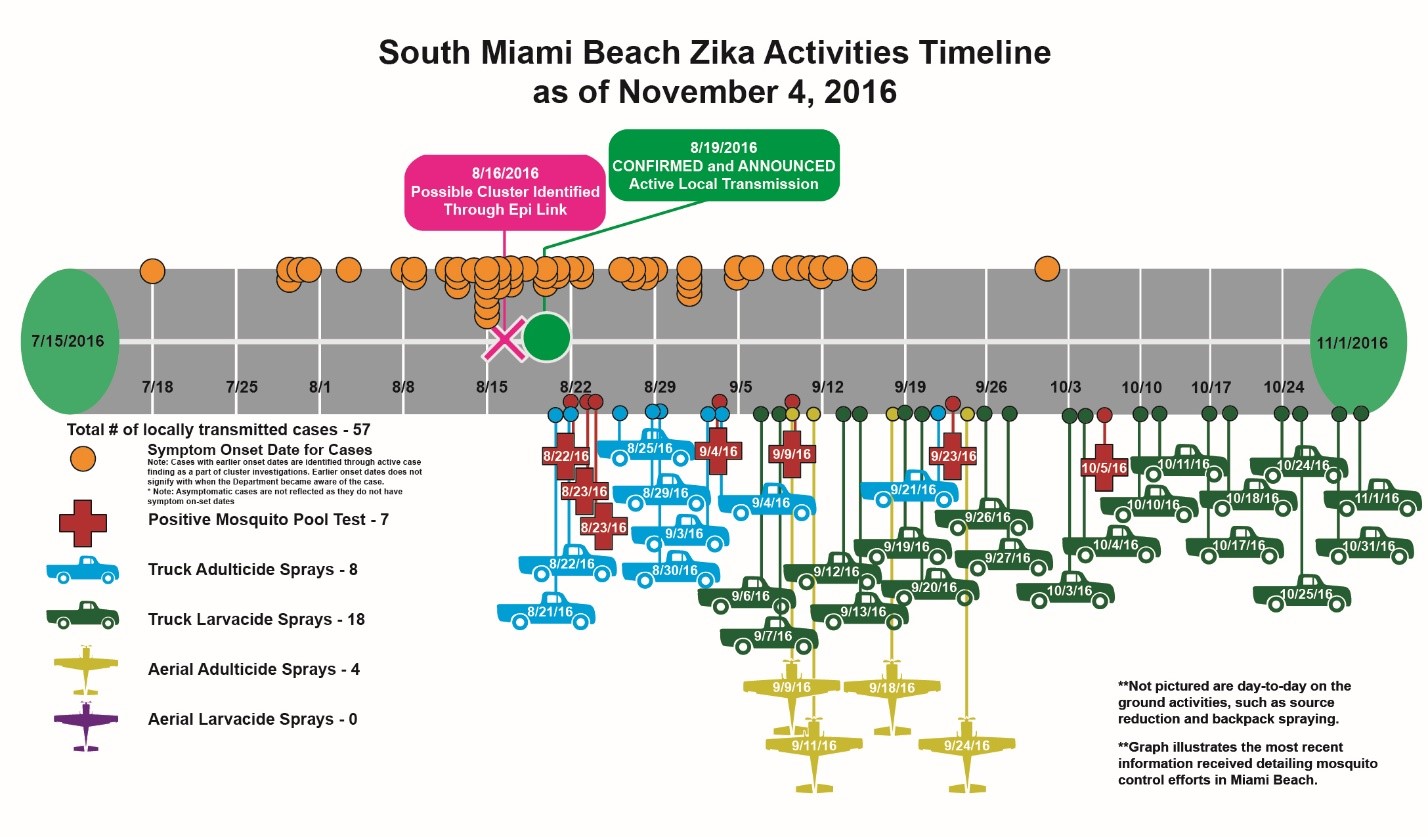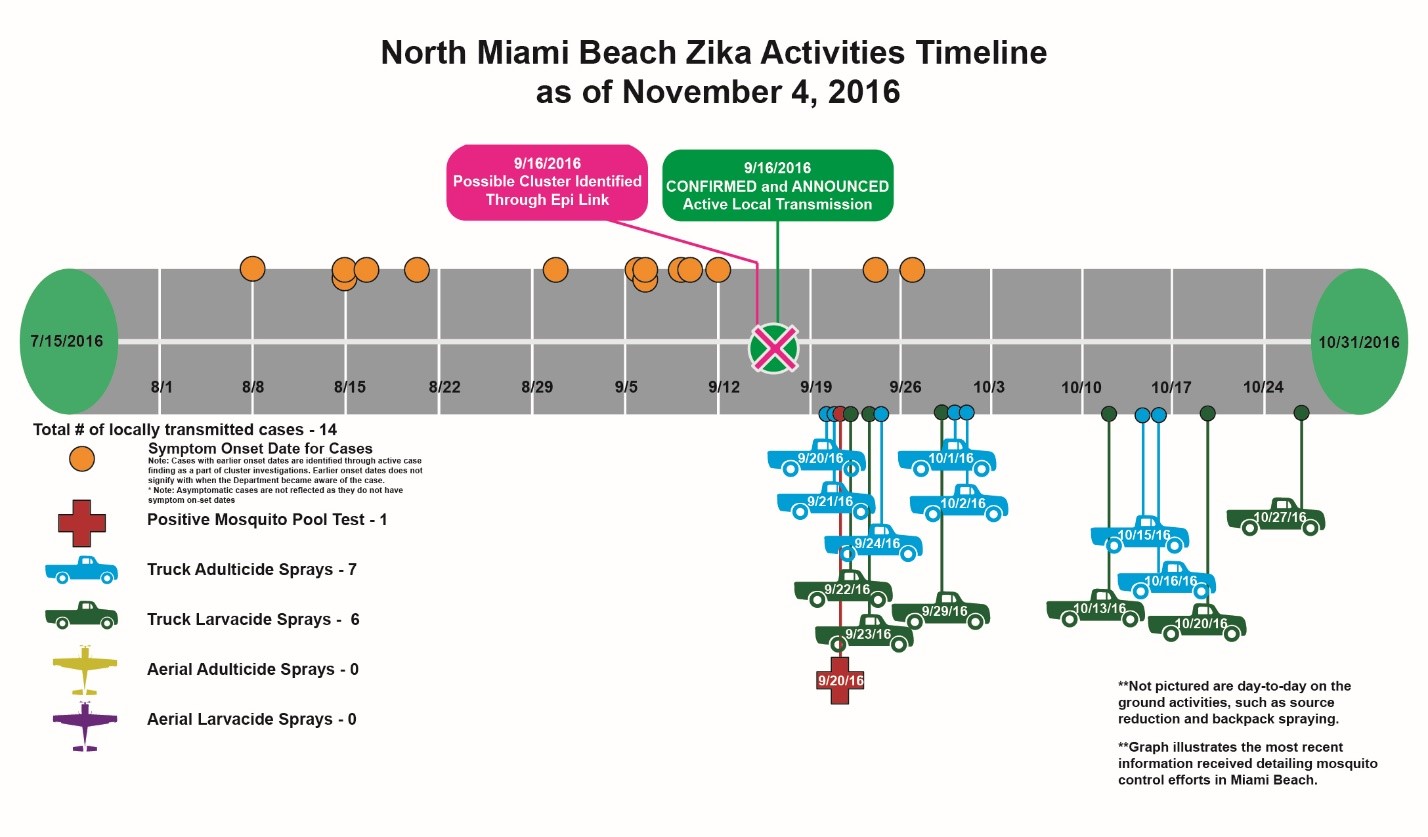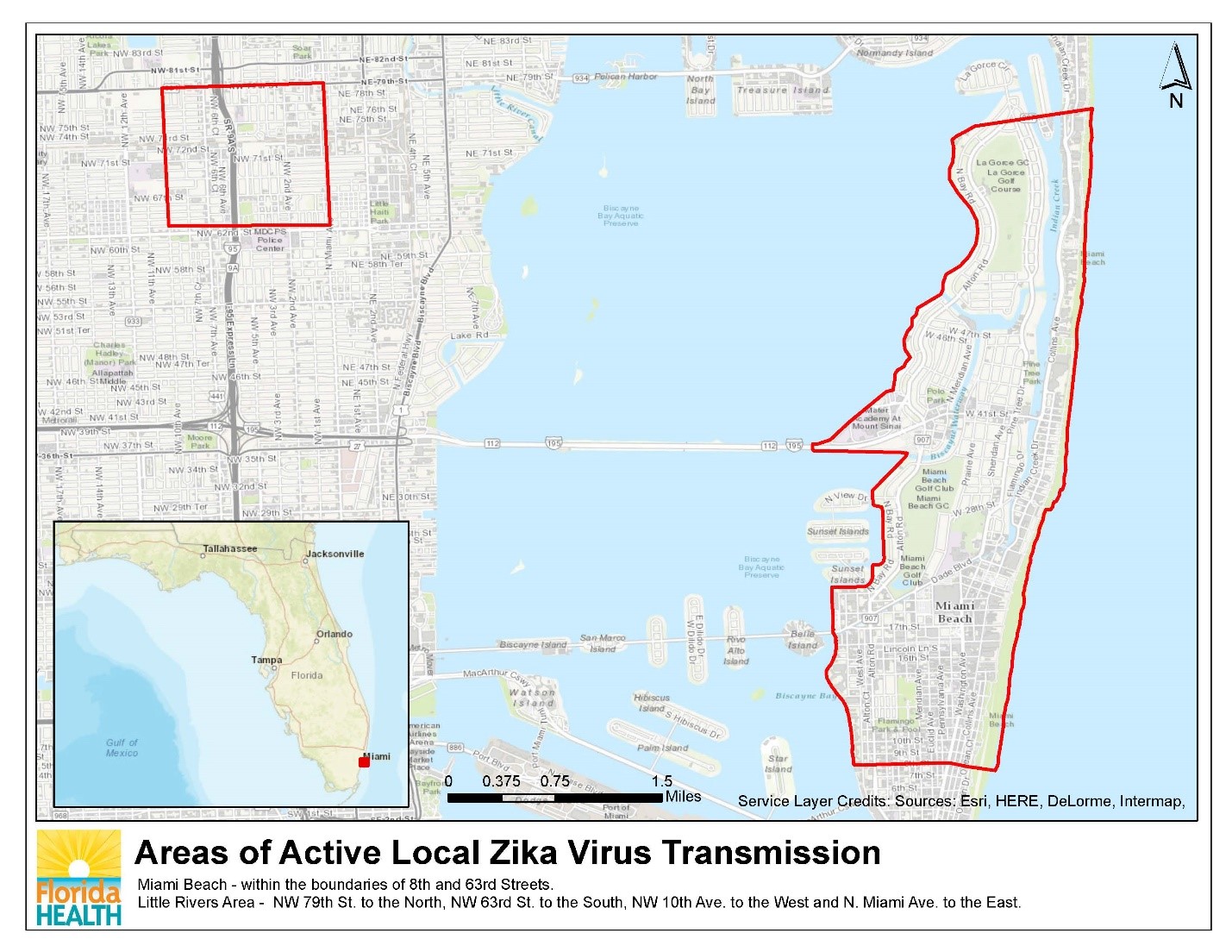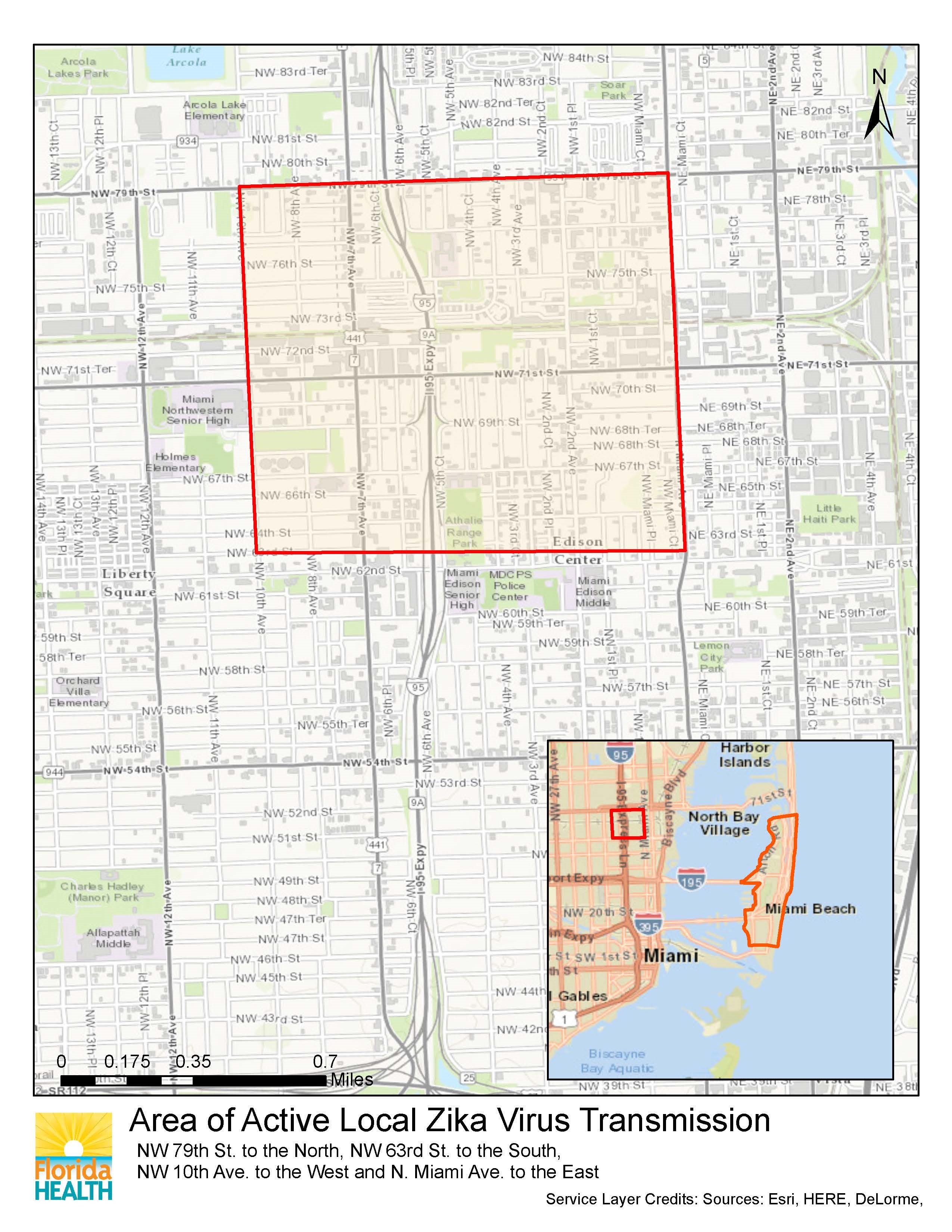Archive for the ‘Zika virus’ Category
CDC: Zika Update
Friday, December 9th, 2016As of December 7, 2016 (5 am EST)
- Zika virus disease and Zika virus congenital infection are nationally notifiable conditions.
- This update from the CDC Arboviral Disease Branch includes provisional data reported to ArboNET for January 01, 2015 – December 7, 2016.
US States
- Locally acquired mosquito-borne cases reported: 185
- Travel-associated cases reported: 4,389
- Laboratory acquired cases reported: 1
- Total: 4,575
- Sexually transmitted: 38
- Guillain-Barré syndrome: 13
US Territories
- Locally acquired cases reported: 33,712
- Travel-associated cases reported: 126
- Total: 33,838*
- Guillain-Barré syndrome: 50
*Sexually transmitted cases are not reported for US territories because with local transmission of Zika virus it is not possible to determine whether infection occurred due to mosquito-borne or sexual transmission.
Florida: Zika Update
Saturday, November 12th, 2016November 11, 2016
Department of Health Daily Zika Update
Tallahassee, Fla. — In an effort to keep Florida residents and visitors safe and aware about the status of the Zika virus, the department will issue a Zika virus update each week day. Updates will include a Zika case count by county and information to keep Floridians informed and prepared. In order to keep the public informed, the department has posted our investigation process here.
There are seven new travel-related cases today with four in Broward, two in Miami-Dade and one in Palm Beach.
There are two new locally acquired cases today. Both cases are associated with the Miami Beach investigation. One individual is a Florida resident and the other is a non-Florida resident.
The total number of Zika cases reported in Florida as of today is 1,158.
|
Infection Type |
Infection Count |
|
Travel-Related Infections of Zika |
922 |
|
Locally Acquired Infections of Zika |
224 |
|
Undetermined |
12 |
|
|
|
|
Pregnant Women with Lab-Evidence of Zika |
147 |
Note, these categories are not mutually exclusive and cannot be added together. Please visit our website to see the full list of travel-related cases by county.
DOH continues door-to-door outreach and targeted testing in Miami-Dade counties and mosquito abatement and reduction activities are also taking place around the locations that are being investigated. DOH believes ongoing transmission is only taking place within the identified area in Miami Beach in Miami-Dade County, see map below.
One case does not mean ongoing active transmission is taking place. DOH conducts a thorough investigation by sampling close contacts and community members around each case to determine if additional people are infected. If DOH finds evidence that active transmission is occurring in an area, the media and the public will be notified.
The timelines below are as of Nov. 4. Due to the Veterans Day Holiday, the timelines will be updated on Monday. Note: asymptomatic cases are not reflected as they do not have symptom on-set dates.
The department is currently conducting 14 active investigations. The department has closed 35 investigations. Information regarding the investigations can be found here. If investigations reveal additional areas of active transmission, the department will announce a defined area of concern.
The department has conducted Zika virus testing for more than 10,162 people statewide. Florida currently has the capacity to test 6,878 people for active Zika virus and 5,650 for Zika antibodies. At Governor Scott’s direction, all county health departments now offer free Zika risk assessment and testing to pregnant women.
Florida’s small case cluster is not considered widespread transmission, however, pregnant women are advised to avoid non-essential travel to the impacted area in Miami-Dade County (see map below). If you are pregnant and must travel or if you live or work in the impacted area, protect yourself from mosquito bites by wearing insect repellent, long clothing and limiting your time outdoors.
According to CDC guidance, providers should test all pregnant women who lived in, traveled to or whose partner traveled to Miami-Dade County after Aug. 1, 2016. It is also recommended that all pregnant women who reside in or travel frequently to the area where active transmission is likely occurring be tested for Zika in the first and second trimester. Pregnant women in the identified area can contact their medical provider or their local county health department to be tested and receive a Zika prevention kit. CDC recommends that a pregnant woman with a history of Zika virus and her provider should consider additional ultrasounds. Additionally, the department is working closely with the Healthy Start Coalition of Miami-Dade County to identify pregnant women in the impacted areas to ensure they have access to resources and information to protect themselves. CDC recommends that a pregnant woman with a history of Zika virus and her provider should consider additional ultrasounds.
Pregnant women can contact their local county health department for Zika risk assessment and testing hours and information. A Zika risk assessment will be conducted by county health department staff and blood and/or urine samples may be collected and sent to labs for testing. It may take one to two weeks to receive results.
Florida has been monitoring pregnant women with evidence of Zika regardless of symptoms. The total number of pregnant women who have been or are being monitored is 147.
On Feb. 12, Governor Scott directed the State Surgeon General to activate a Zika Virus Information Hotline for current Florida residents and visitors, as well as anyone planning on traveling to Florida in the near future. The hotline, managed by the Department of Health, has assisted 7,258 callers since it launched. The number for the Zika Virus Information Hotline is 1-855-622-6735.
The department urges Floridians to drain standing water weekly, no matter how seemingly small. A couple drops of water in a bottle cap can be a breeding location for mosquitoes. Residents and visitors also need to use repellents when enjoying the Florida outdoors.
For more information on DOH action and federal guidance, please click here.
For resources and information on Zika virus, click here.
CDC Zika Updates
Friday, November 4th, 2016- US States and DC: 1,005
- US Territories: 2,263
*Source: Pregnancy Registries as of October 27, 2016
More on Outcomes(https://www.cdc.gov/zika/geo/pregnancy-outcomes.html)
Zika Virus Disease Cases Reported to ArboNET*(https://www.cdc.gov/zika/geo/united-states.html)
- US States and DC: 4,128
- US Territories: 30,178
*Source: ArboNET as of November 2, 2016
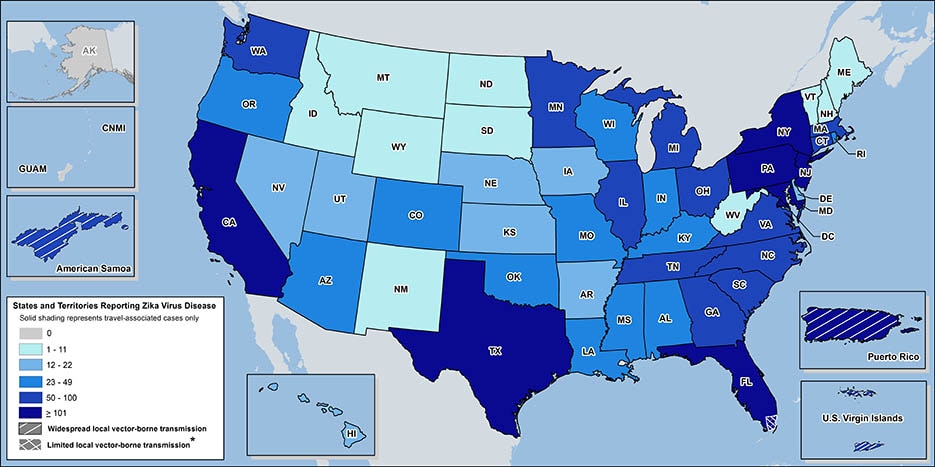
Zika Virus & South Florida Maps
Thursday, October 20th, 2016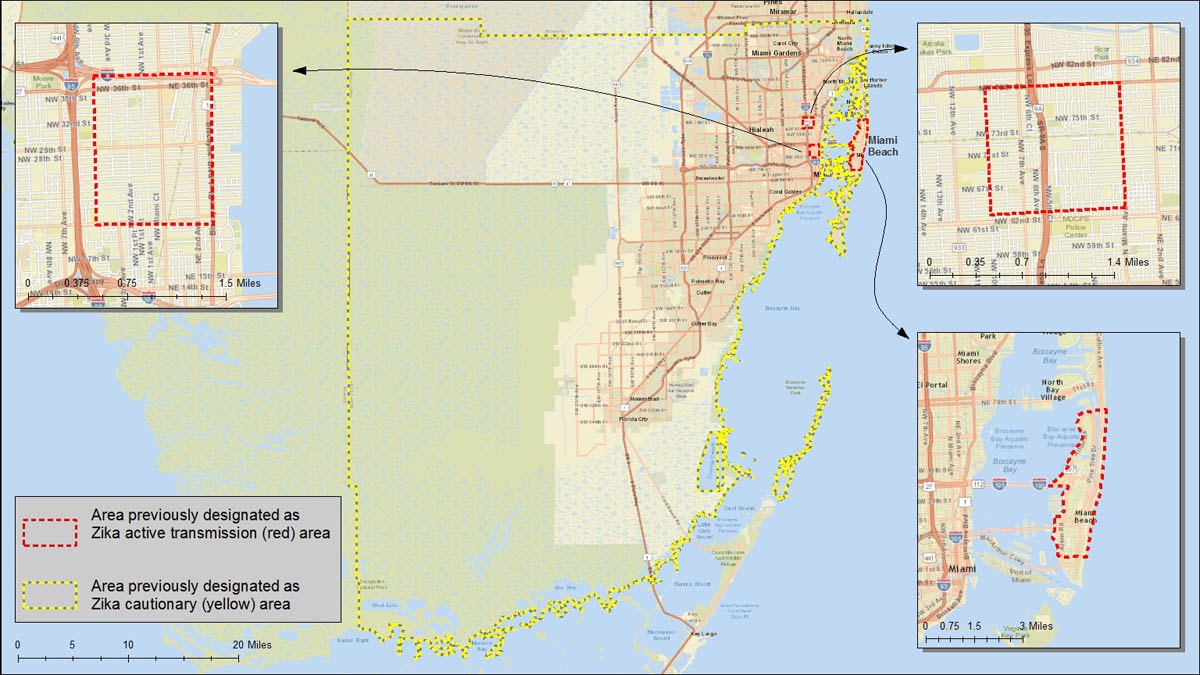
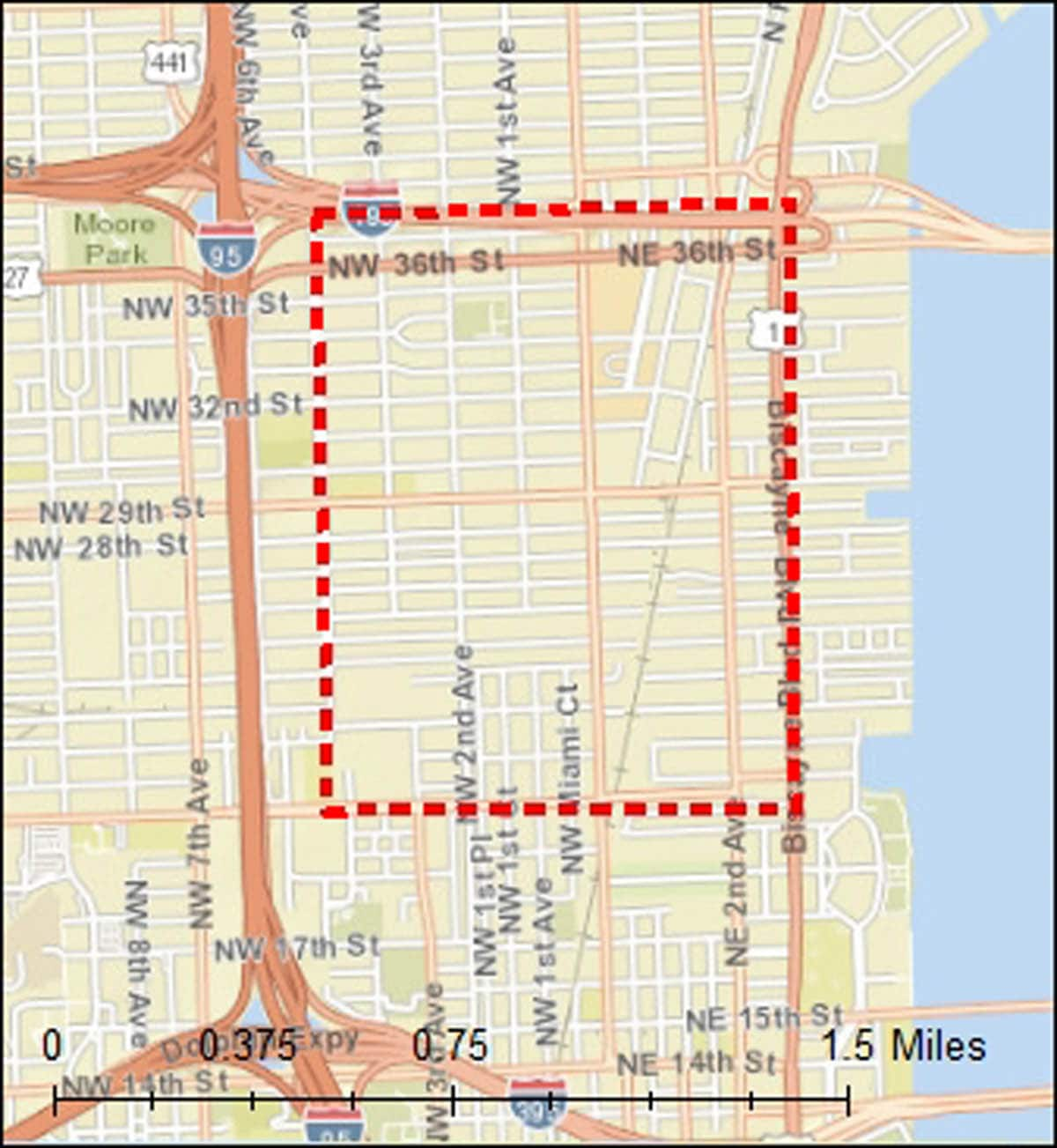
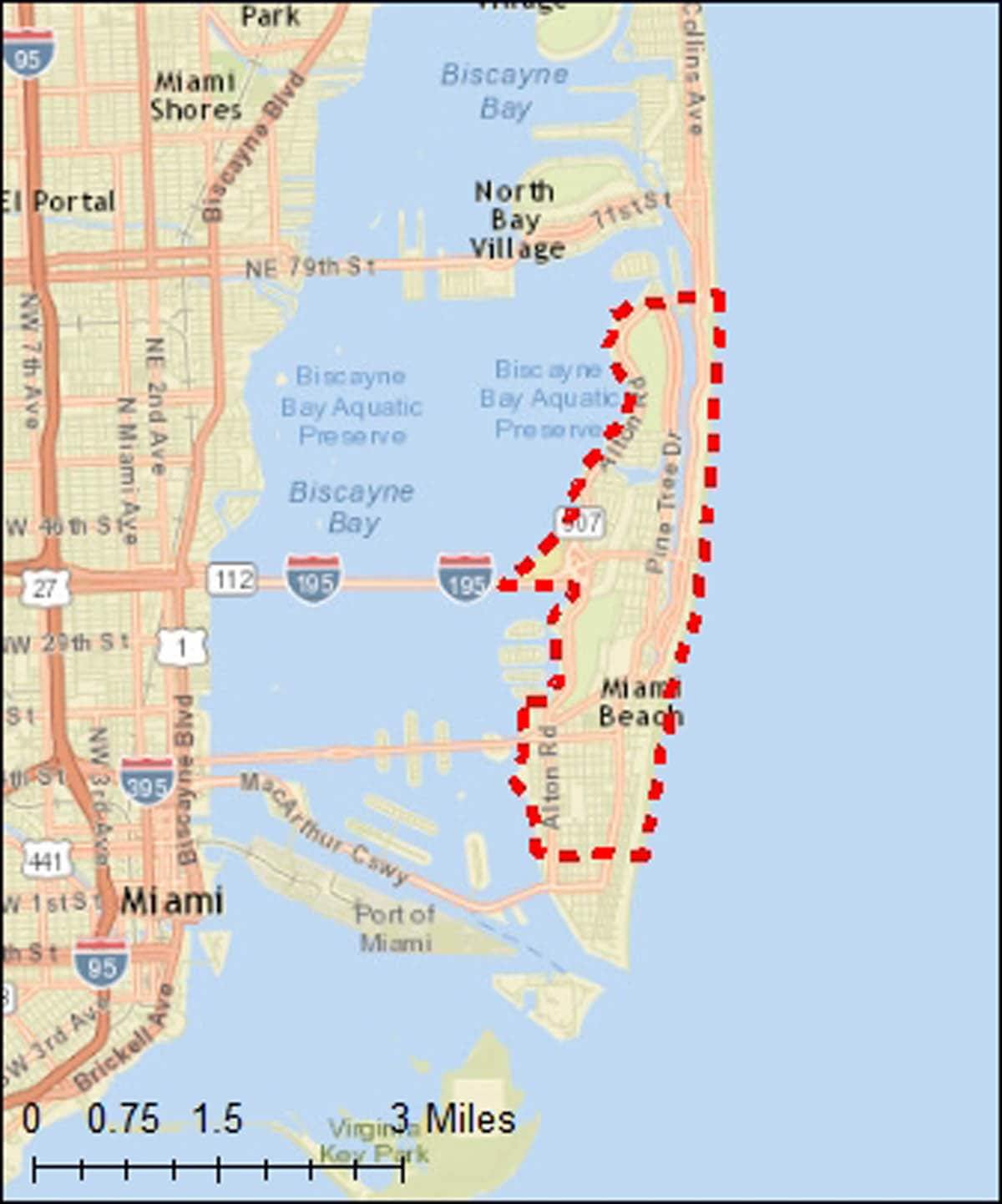
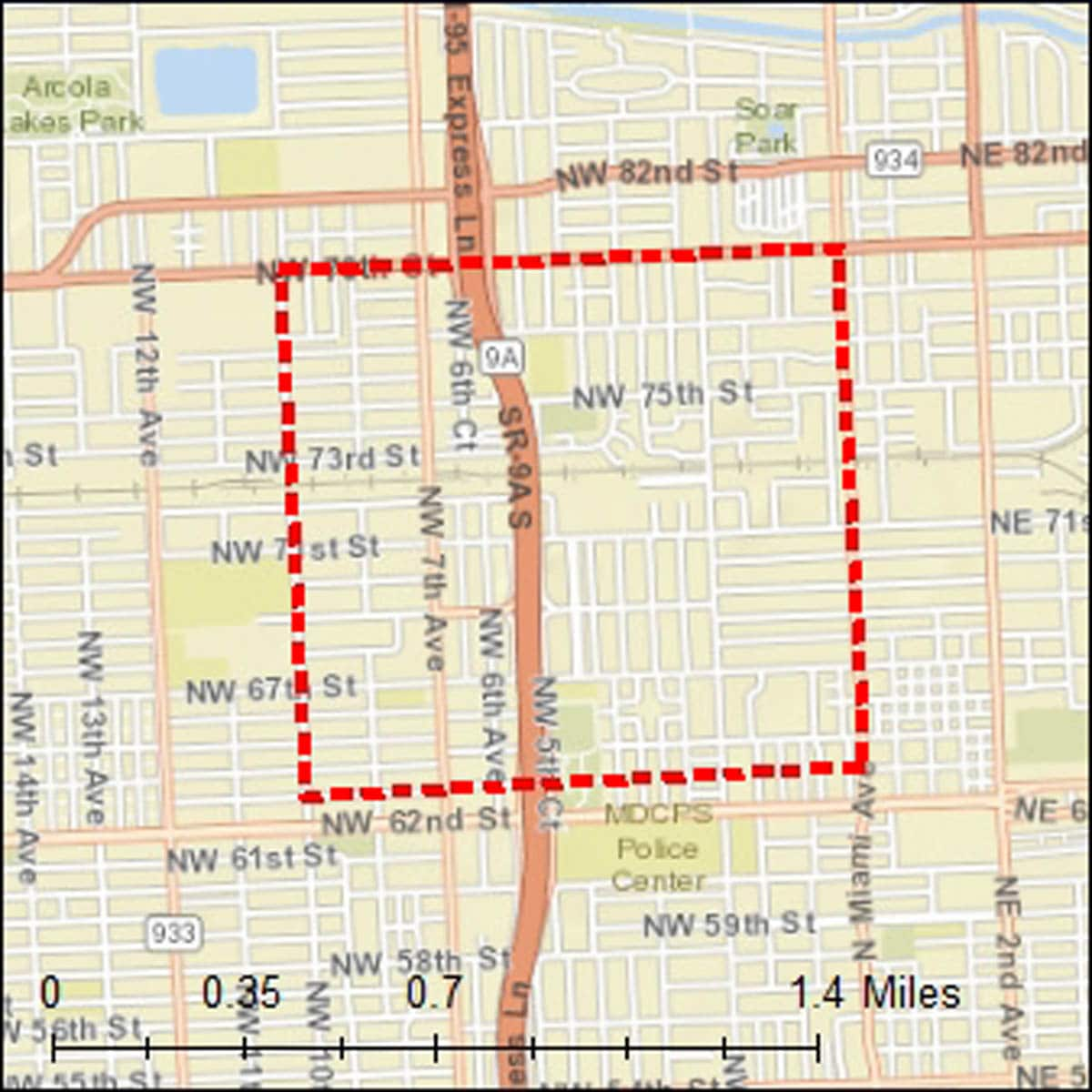
| Distributed via the CDC Health Alert Network October 19, 2016, 1700 ET (5:00 PM ET) CDCHAN-00398 CDC Updates Guidance for Pregnant Women and Women and Men of Reproductive Age for Zika Virus Infection Related to the Ongoing Investigation of Local Mosquito-borne Zika Virus Transmission in Miami-Dade County, FloridaSummary The U.S. Centers for Disease Control and Prevention (CDC) previously issued travel, testing, and other guidance related to areas of active Zika virus transmission in Florida. Because local transmission of Zika virus continues to be reported in Miami-Dade County, CDC is strengthening travel recommendations for pregnant women to Miami-Dade County and also reinforcing recommendations for use of protective measures to prevent exposure to Zika. CDC is updating recommendations to emphasize testing for pregnant women with an epidemiologic link to Miami-Dade County. An epidemiologic link means that they lived in, traveled to, or had unprotected sex with someone who lived in or traveled to, the designated area. In addition, CDC has made specific recommendations for areas of identified active transmission. The Florida Department of Health (FL DOH) has identified a new area where local, state, and CDC officials have determined that the intensity of Zika virus transmission presents a significant risk to pregnant women in a designated one-square-mile area located in Miami-Dade County (NW 79th St. to the north, NW 63rd St. to the south, NW 10th Ave. to the west and N. Miami Ave. to the east).
Because the incubation period for Zika virus infection is up to two weeks and many people infected with Zika virus will not have symptoms or will only have mild symptoms, investigating cases may take several weeks. Data collected during the ongoing investigation indicate the period of time since August 1 represents the timeframe with the highest transmission in Miami-Dade County. FL DOH and CDC continue to work together on this ongoing investigation to learn more about active Zika virus transmission in Miami-Dade County. CDC will update these recommendations as more information becomes available. Healthcare providers should visit CDC’s Zika website (http://www.cdc.gov/zika/) frequently for the most up-to-date recommendations. Recommendations Red and Yellow Area Designation
Currently, a 4.5-square-mile area of Miami Beach and one-square-mile area in Little River located in Miami-Dade County (http//www.cdc.gov/zika/intheus/florida-update.html) are red areas and the rest of Miami-Dade County is a yellow area. Because this investigation is ongoing and the designation of areas is likely to change over time, please frequently check the website (http//www.cdc.gov/zika/intheus/florida-update.html) for the most up-to-date designation of red and yellow areas. Recommendations for Miami-Dade County Travel Recommendations for Pregnant Women
Testing Recommendations for Pregnant Women
Protective Measures Recommendations for Pregnant Women
Women and Men Who are Planning to Conceive
Additional Recommendations Background For pregnant women who report clinical illness consistent with Zika virus disease (symptomatic pregnant women), CDC’s testing recommendations are the same for those with ongoing risk and those with limited risk for possible Zika virus exposure. Symptomatic pregnant women who are evaluated less than two weeks after symptom onset should receive serum and urine Zika virus RNA nucleic acid test (NAT) testing. Symptomatic pregnant women who are evaluated 2 to 12 weeks after symptom onset should first receive a Zika virus immunoglobulin (Ig) M antibody test; if the IgM antibody test result is positive or equivocal (unclear), serum and urine RNA NAT testing should be performed. If the RNA NAT result is negative, a positive or equivocal (unclear) Zika virus IgM antibody test result should be followed by plaque reduction neutralization testing (PRNT). Interpretation of serologic results has been described (http://www.cdc.gov/mmwr/volumes/65/wr/mm6521e1.htm). Testing recommendations for pregnant women with possible Zika virus exposure who do not report clinical illness consistent with Zika virus disease (asymptomatic pregnant women) differ based on the circumstances of possible exposure. For asymptomatic pregnant women with ongoing risk for possible exposure who are evaluated less than two weeks after last possible exposure, RNA NAT testing should be performed. If the RNA NAT result is negative, a Zika virus IgM antibody test should be performed 2 to 12 weeks after the exposure. Asymptomatic pregnant women with limited risk for possible exposure who are first evaluated 2 to 12 weeks after their last possible exposure should first receive a Zika virus IgM antibody test; if the IgM antibody test result is positive or equivocal (unclear), serum and urine RNA NAT should be performed. Asymptomatic pregnant women with ongoing risk for possible exposure to Zika virus should receive Zika virus IgM antibody testing as part of routine obstetric care during the first and second trimesters; immediate RNA NAT testing should be performed when IgM antibody test results are positive or equivocal (unclear). Further information on the interpretation of laboratory test results and clinical management of pregnant women with laboratory evidence of possible Zika virus infection are available below. For More Information
|
Matthew’s Zika Threat: As the waters from Hurricane Matthew began to recede, Adult mosquitoes that survive will lay new eggs near standing water that will hatch over and grow over the next week.
Monday, October 10th, 2016Confirmed cases of Zika virus in Singapore up to 82, as the US joins a growing list of countries warning pregnant women or those trying to get pregnant to avoid travel to the city-state.
Thursday, September 1st, 2016Congenital infection with Zika virus should be considered a risk factor for hearing loss.
Wednesday, August 31st, 2016Leal MC, Muniz LF, Ferreira TS, et al. Hearing Loss in Infants with Microcephaly and Evidence of Congenital Zika Virus Infection — Brazil, November 2015–May 2016. MMWR Morb Mortal Wkly Rep. ePub: 30 August 2016. DOI: http://dx.doi.org/10.15585/mmwr.mm6534e3.
The total number of Zika virus infections in Singapore has risen to 56.
Tuesday, August 30th, 2016‘….”They are not known to have traveled to Zika-affected areas recently, and are thus likely to have been infected in Singapore,” a statement released by the ministry said….’





